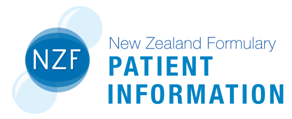What does it do?
Rifampicin is an antibiotic used to treat and prevent bacterial infections.
Before you start
- Tell your doctor if you have liver problems.
- Tell your doctor if you are pregnant, planning to become pregnant, or breastfeeding.
How should you take it?
Take rifampicin regularly as directed. It is best to take it on an empty stomach if possible, one hour before or two hours after food. Keep taking it until the course is finished, even if you start to feel better.
It is important to take it regularly. If you often forget to take it, it may not work as well.
Tablet: Take with a glass of water.
Liquid: Shake well before use. Measure each dose carefully with an oral syringe or measuring spoon.
What if you forget a dose?
If it is nearly time for your next dose, skip the missed dose and take your next dose at the usual time. Otherwise, take the missed dose as soon as you remember. Do not take two doses at the same time.
Can you take other medicines?
Rifampicin can react with many medicines, sometimes with severe results.
Remember to tell your pharmacist or doctor you are taking rifampicin before starting any other medicines or treatments, including over-the-counter medicines, vitamins, herbal products or recreational drugs.
What side effects might you notice?
| Side Effects | Recommended action |
|---|---|
|
Symptoms of liver problems including: yellow skin or eyes, itching, dark urine, pale bowel motions, abdominal pain Reduced number of blood cells that help your blood to clot - symptoms include: easy or unusual bruising or bleeding |
Tell your doctor immediately |
|
Skin rash, itching, flushing |
Tell your doctor |
|
Flu-like symptoms (fever, chills, aches and pains, nausea, headache, tiredness or weakness) Stomach upset |
Tell your doctor if troublesome |
|
Change in colour of body fluids e.g. urine, sweat, tears (red/orange) |
This is harmless. Soft contact lenses may be stained. |
If you notice any other effects, discuss them with your doctor or pharmacist.
Other information:
- Limit alcohol intake while taking rifampicin. Alcohol may increase the risk of liver problems.
- You will need regular blood tests while taking rifampicin to check if it is causing problems with your liver.
- Some contraceptives may not work as well while you are taking rifampicin, and for 4 weeks after stopping. Discuss with your doctor or pharmacist.
This leaflet contains important, but not all, information about this medicine.
Prepared by the MyMedicines Committee at Christchurch Hospital, Te Whatu Ora - Waitaha, New Zealand. April 2025
For more general information about this sheet and its contents, see: What does a My Medicines sheet cover?
Te Reo Māori
Te Reo Māori information sheets supported by Health Quality and Safety Commission New Zealand
Web links for this sheet in different formats
Click on buttons to copy web addresses for this leaflet:
If your browser does not automatically copy these links use its copy command instead.
About My Medicines
My Medicines Patient Information Leaflets (PILs) contain important, but not all, information about the medicines they describe.
For more information about the sheets, see: What does a My Medicines sheet cover?
My Medicines is developed by a team at Te Whatu Ora – Waitaha. Our team is made up of doctors, pharmacists, and a non-medical person to help us keep to plain language. We also discuss our information with specialist health professionals or groups when needed

